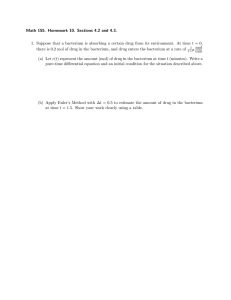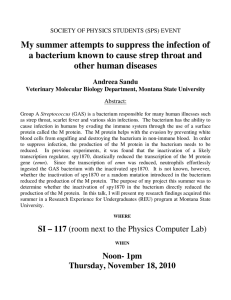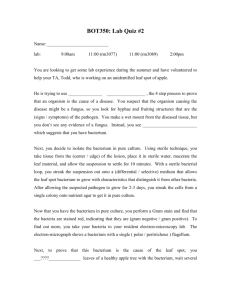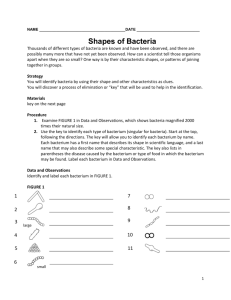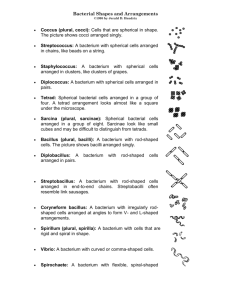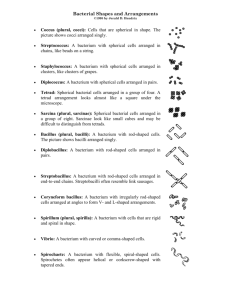volcanic marine
advertisement
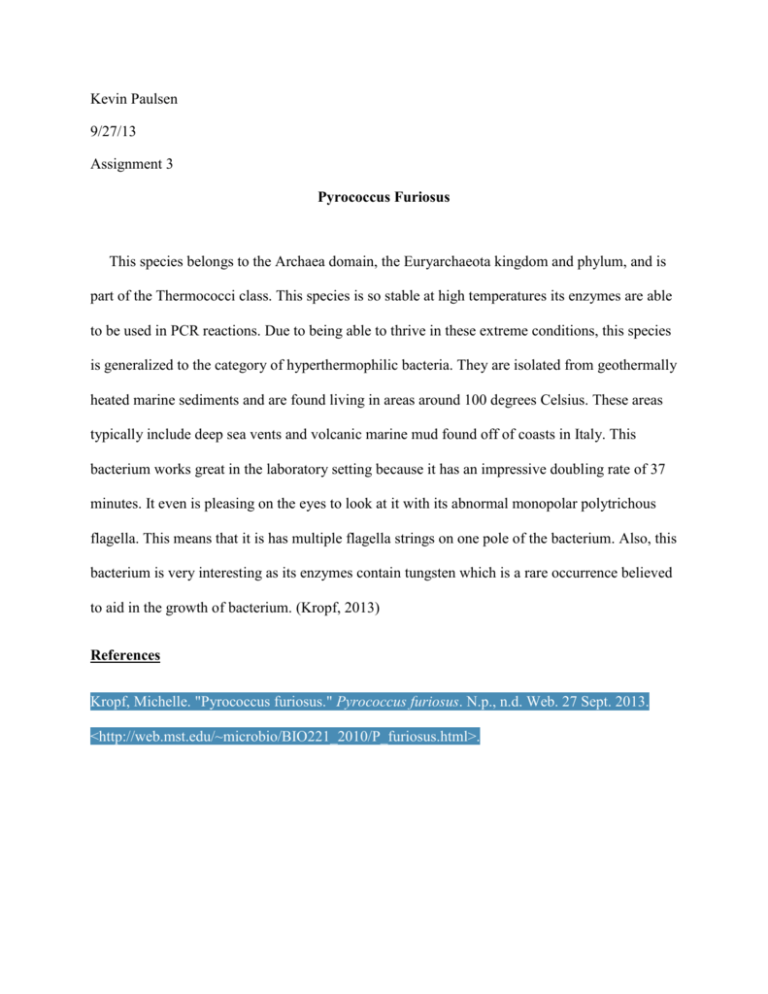
Kevin Paulsen 9/27/13 Assignment 3 Pyrococcus Furiosus This species belongs to the Archaea domain, the Euryarchaeota kingdom and phylum, and is part of the Thermococci class. This species is so stable at high temperatures its enzymes are able to be used in PCR reactions. Due to being able to thrive in these extreme conditions, this species is generalized to the category of hyperthermophilic bacteria. They are isolated from geothermally heated marine sediments and are found living in areas around 100 degrees Celsius. These areas typically include deep sea vents and volcanic marine mud found off of coasts in Italy. This bacterium works great in the laboratory setting because it has an impressive doubling rate of 37 minutes. It even is pleasing on the eyes to look at it with its abnormal monopolar polytrichous flagella. This means that it is has multiple flagella strings on one pole of the bacterium. Also, this bacterium is very interesting as its enzymes contain tungsten which is a rare occurrence believed to aid in the growth of bacterium. (Kropf, 2013) References Kropf, Michelle. "Pyrococcus furiosus." Pyrococcus furiosus. N.p., n.d. Web. 27 Sept. 2013. <http://web.mst.edu/~microbio/BIO221_2010/P_furiosus.html>.
